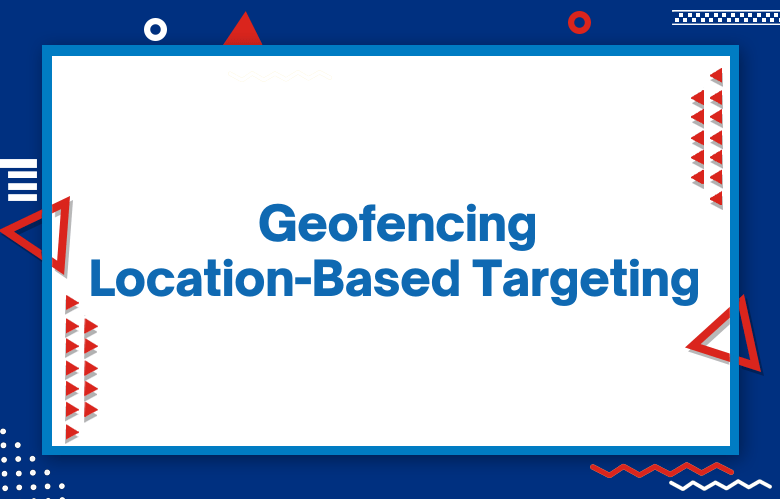Geofencing: Location-Based Targeting Tactics

Geofencing is a location-based targeting tactic that uses GPS to create virtual boundaries around a physical space. This technique can be used in many different ways, from triggering marketing messages and advertisements based on user location to restricting property access to only those within the geofenced area.
Geofencing is a relatively new technology with many benefits for businesses. It allows marketers to send customized notifications or offers depending on where the individual is located when they receive them–making it easier than ever before for companies to connect with their audience.
Geofencing can be used as an effective security measure by locking down certain areas of real estate and preventing unauthorized entry into buildings or other spaces.
Geofencing: Location-Based Targeting Tactics is a guide for businesses considering implementing geofencing into their marketing campaigns. This post can help you understand the basics of this tactic and how it can be used to your advantage as a marketer.
It also discusses pitfalls to avoid when using this technique, such as becoming too aggressive with push notifications or location reminders to stay compliant with privacy laws. To learn more about Geofencing, read on!
What is Geoframing?
Geoframing is a technique used to make your content more effective. It involves writing for different audiences within their cultures and languages.
Geoframing is a method of online marketing used to promote local businesses. It’s a powerful way to reach customers in your town or city because social media works best in person.
Geoframing is a technique that you can use to attract more customers. It’s based on the idea that location and distance are essential factors in t-commerce and marketing. This method has been used for decades.
What is Geotargeting?
Geotargeting is a system that allows you to determine the location of your visitors. It helps improve the user experience, as well as online revenue and conversions.
Geotargeting is a way to target your audience based on their location. You can decide who in a specific area sees what ads, and it always shows up as local.
The term “geotargeting” is the practice of serving content based on a visitor’s geographic location.
With Geotargeting, you can advertise your website to people who are in the same country or city as you.
What is Geofencing?
Geofence is a virtual perimeter around a geographical location, such as your home or office.
Geofencing is used in marketing. Geotargeting is when a business uses the GPS location of customers to send them ads for products that are relevant to their location.
Geofencing is a technology that uses GPS and wireless networks to identify the geographic boundaries of an area. Geofences are used in many ways. For example, they can be used as a marketing tool to deliver location-based content or offers based.
Geofencing is a virtual perimeter around a physical location. When someone enters or leaves the area, an action can be triggered. For example, when customers enter your store, they may receive special offers and messages on their phones within that vicinity.
Geofencing is a technology that helps create virtual barriers in the physical world. Using Bluetooth, radio signals, or even Wi-Fi, companies can set these boundaries and get an alert when someone reaches it. This is often used for marketing purposes.
Location-Based Targeting Tactics
By using location-based targeting, you can target your customers by where they are. You can also include the geotag to your business listing to gain more visibility and get discovered easier on Google Maps.
Location-Based Targeting Tactics is a great course to take to learn about the framework of location-based targeting. It covers how you can implement these campaigns on your own and will help you become an expert in this field.
There are several location-based targeting tactics your business can use to increase the number of sales you make. One way is by using Facebook Analytics for Apps – this allows you to target users who have visited your store or even those who have downloaded specifically.
There are many ways to make a location-based app more successful. One way is through geofencing, in which ads can be placed at specific locations where users are most likely to visit or pass by.
- Targeting by location
- Geotargeting
- Location-based advertising
- Location-based marketing
- Understand the different types of location-based targeting
- Utilize your current customer data to make better decisions about advertising campaigns
- Use geofencing to target customers in a specific area or radius around a store, event, or other sites
- Create hyperlocal ads that are only available in certain areas and time frames
- Location-based targeting can be a great way to reach potential customers in the area
- The first step is to find out where your target audience lives, works, and plays
- You can use Google Maps or other mapping software to pinpoint locations of interest for your business
- Next, you’ll want to set up campaigns on Facebook and Instagram that are targeted at those specific areas
- Understand the benefits of location-based targeting
- Identify your target audience and their preferences
- Determine your budget for this campaign
- Choose a platform that will reach your desired audience
- Create a mobile application to promote your product or service
- Choose a location-based targeting tactic
- Targeting by interests: show ads to people who have visited pages related to your business or industry.
- Targeting by demographics: target specific age groups, genders, and income levels based on their browsing history
- Targeting by behavior: show ads for products that are similar to what the person has been looking at online.
- Location-based targeting is a marketing strategy that uses the location of your mobile device to serve you ads and offers based on where you are
- The first step in implementing this type of campaign is to identify your target audience by deciding which locations or segments they frequent
- Next, create specific campaigns for each segment with different offers and messages tailored specifically to them.
- Location-based targeting is a marketing strategy that relies on the geographic location of mobile devices to deliver content, offers, or ads.
- A business can use this data to tailor its messages and target specific audiences based on demographics, behaviors, attitudes, and other factors.
- The popularity of location-based targeting has risen as more people are using smartphones in their everyday lives.
Geoframing Campaign Examples
- Make your product or service more accessible to a specific geographical area.
- Increase the visibility of your store in a specific location
- Create an exclusive offer for customers who live in that region
- Promote new products and services only available to people living in that area
- “Geoframing is a new way to connect with customers in the physical world.”
- “It’s like augmented reality, but for your business!”
- “You can use geoframing to promote products and services or just share information about what you’re up to.”
- A bakery that posts a ‘tweetable’ picture of their latest creations on Instagram every day, so people know they’ve got something good going on at all times.”
- An ice cream parlor that uses framing to show people where they can find them when it starts getting hot outside.”
- Geoframing is a new and unique marketing strategy that has been used to increase business foot traffic.
- This article will provide you with examples of framing campaigns, as well as an overview of the benefits of this type of campaign.
- The first example is from a restaurant in NYC called “Soho House,” where they placed a frame around their building on Google Street View so it would show up on searches for restaurants in Soho.
- The second example is from Starbucks, which put frames around all their locations, which then showed up when people searched for coffee shops nearby.
- Geoframing is a marketing strategy that uses location-based services to engage with customers in the real world.
- This post will show you how to use framing for your business and provide examples of successful campaigns.
- The first step is deciding what kind of message you want to send
- You can choose between an informative or promotional campaign
- For example, if your store has recently opened up in a new area, it might be good to do an informative campaign about the opening and let people know where they are located (ex: “We just opened up down the street! Come check us out!”)
- If you have any promotions going on at the time, it would be wise to include those as well (ex: “Come get 20% off our entire inventory!”)
- Once you’ve chosen your type of campaign, start thinking about which channels best suit your needs – this will depend on what type of message you’re trying to convey and who you’re targeting
- Geoframing is a relatively new marketing technique that allows businesses to frame their ads with the context of where they are being shown
- This means that if an ad for a coffee shop appears on Facebook, it will be framed by what other posts people see in their feed- think friends’ photos, articles, and so on
- It’s essential to make sure your frame campaign is consistent with your brand identity and tone of voice
Conclusion
We know that the mobile revolution has changed how we do business. With so many people on their phones all day, it’s more important than ever to fix yourself reaching your customers where they are most often and when they want it.
Location-based targeting can help you target those who might be interested in your product or service at a specific time of day, even if they never signed up for an email list or opted in to push notifications from you! If this sounds like something that could benefit your digital marketing strategy, contact us today for some ideas about what may work best.
Call: +91 9848321284
Email: [email protected]



